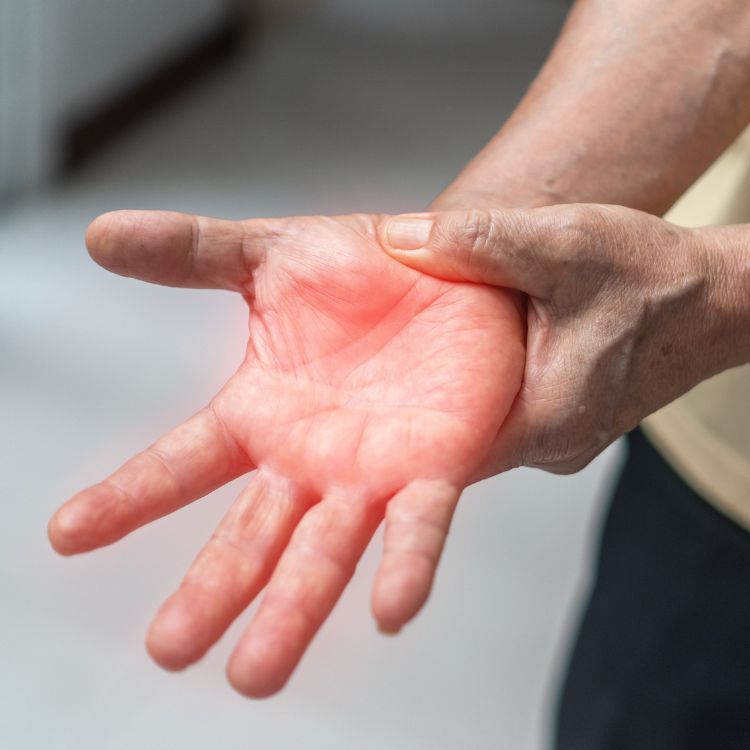Causes and Symptoms of CRPS
Symptoms
The hallmark symptom of CRPS is intense, persistent pain in an extremity following an injury or medical event. This pain is often out of proportion to the initial injury and can progressively worsen over time. Additional symptoms may include:
- Burning or throbbing pain in the affected limb
- Increased sensitivity to touch or temperature
- Swelling and stiffness in the joints
- Changes in skin temperature, texture, or color (skin may appear red, pale, or blotchy)
- Muscle weakness, tremors, or involuntary movements
- Decreased range of motion and mobility in the affected limb
Some individuals may experience periods of symptom flare-ups, while others have persistent pain and dysfunction. In severe cases, CRPS can lead to muscle atrophy and bone density loss, making early intervention critical.
What Causes CRPS?
While the exact cause of CRPS remains unclear, most cases occur after physical trauma or nerve damage. Some of the potential triggers include:
- Fractures, sprains, or soft tissue injuries
- Surgery or medical procedures
- Infections or inflammatory conditions
- Nerve compression or damage
- Stroke or heart attack (which may cause nerve-related complications)
One of the unique characteristics of CRPS is that the severity of the pain often far exceeds what would typically be expected from the original injury. This suggests that the condition may be linked to abnormal nervous system responses, where the brain and spinal cord misinterpret pain signals, leading to prolonged and exaggerated pain sensations.
How Is CRPS Diagnosed?
Diagnosing CRPS can be challenging, as there is no single test to confirm the condition. Instead, doctors rely on:
- A thorough medical history and physical examination
- Evaluation of symptoms, including pain patterns and skin changes
- Imaging tests such as MRI or bone scans to check for CRPS-related bone and tissue changes
- Diagnostic nerve blocks, which may provide temporary relief and help confirm a CRPS diagnosis
Since CRPS can mimic other conditions like arthritis, nerve compression syndromes, or autoimmune disorders, ruling out other causes is a key part of the diagnostic process.
Treatment Options for CRPS
There is no definitive cure for CRPS, but early treatment can help reduce symptoms and improve function. Treatment plans typically involve a combination of medications, physical therapy, and interventional procedures to manage pain and restore mobility.
Medications
Doctors may prescribe:
- Pain relievers (over-the-counter or prescription)
- Nerve pain medications such as gabapentin or pregabalin
- Anti-inflammatory drugs to reduce swelling
- Muscle relaxants to ease muscle stiffness and spasms
- Corticosteroids for severe inflammation
Physical Therapy
Regular movement and rehabilitation exercises can help improve circulation, prevent muscle atrophy, and maintain joint mobility. A physical therapist may use techniques such as:
- Gentle stretching and strengthening exercises
- Desensitization therapy for touch sensitivity
- Mirror therapy to retrain the brain’s pain response
Interventional Treatments
For individuals with persistent or severe pain, interventional procedures may provide relief:
- Sympathetic Nerve Blocks – Injections that temporarily block pain signals from the affected nerves
- Spinal Cord Stimulation – A device implanted near the spinal cord that delivers electrical impulses to disrupt pain signals
- Intrathecal Drug Pumps – A system that delivers pain medication directly to the spinal cord for long-term pain control


